As a prepper, you probably recognize the commercial food supply system has its flaws. Some prepare for the possibility of its breakdown by stocking up on shelf-stable foods and keeping vegetable gardens. But could these emergency food stocks be exploited by others during a food shortage?
What will people eat when the supermarkets are empty or looted? People will probably emerge from their homes in search of government aid.
For some desperate individuals though, it might seem easier to trespass on your property and steal from your garden instead. This can be especially alarming if you live in the city or suburbs.
Protecting Your Hidden Survival Garden
Now, you might be the type of person who delights in sharing your knowledge about gardening (and even some of your harvest!) with your friends and neighbors. Be that as it may, that doesn’t mean you’re okay with people stealing from you.
The truth is, in stressful survival situations many people would have no ethical qualms with stealing from their neighbor’s garden. In times like these, it’s wise to expect the best but prepare for the worst.
In this case, creating a hidden food garden might be a good idea. It’s helpful to consider some ways you can protect your edible plant supply in the event of a food shortage.
As you explore this important topic, consider questions like the following:
- What should I plant that will not be obvious to thieves?
- What edible wild plants do I already have growing naturally on my property?
- What plants should I keep that can help to make a decent meal?
- What plants should I keep that have enough nutrients to survive on for some time?
- Where and how should I hide my plants?
- What plants can I keep that are both medical and edible?
When it comes to survival gardens, the best “secret” planting spots are usually hidden in plain sight. Hide and disguise your important survival plants near other plants using a permaculture-like gardening method. Trees, shrubs, groundcover, and vines all make for great camouflage.
The trick is to avoid planting in rows or any method that looks too intentional. In fact, the more messy and disordered your hidden plants look, the less likely they will be disturbed by strangers. You can also keep several edible plants indoors or in a hidden root cellar as an added precaution.
Depending on your region, you might even consider guarding your plants with cacti, poisonous look-alikes, or other similar protective plants. Although this option could prove to be more dangerous to you than possible trespassers in the long run, it would definitely keep would-be thieves from making the same mistake twice!
Related: Ingenious Traps You Can Set Up On Your Property To Catch Looters
15 Survival Plants You Should Hide From Your Neighbors
Generally speaking and not accounting for specific hardiness zones, there are a few plants you would do well to keep in your hidden survival garden if you can.
These plants will provide you with multiple uses—medicinal and edible—and will ensure you’re getting a good enough balance of carbs, macronutrients, and micronutrients.
Plus, a lot of the plants on this list are not instantly recognizable as edible to the untrained eye, so your survival garden will be safeguarded that much more.
Purslane
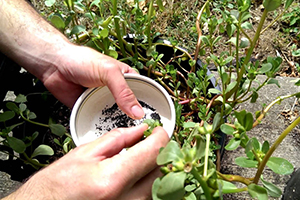 Purslane is a delicious and nutrient-dense “weed” that often gets dismissed. This trailing annual succulent plant has an impressive list of vitamins and minerals. It’s high in omega-3 fatty acids and vitamins A, B, C, and E. It also has high levels of iron, magnesium, calcium, potassium, and manganese!
Purslane is a delicious and nutrient-dense “weed” that often gets dismissed. This trailing annual succulent plant has an impressive list of vitamins and minerals. It’s high in omega-3 fatty acids and vitamins A, B, C, and E. It also has high levels of iron, magnesium, calcium, potassium, and manganese!
Purslane has juicy, crunchy leaves with mild citrus and pepper notes. You can eat it raw or cooked, and it makes an especially tasty pesto sauce or tossed in a salad.
This impressive survival plant grows in abundance and since most people have never eaten it, they won’t know what they’re looking at if they try to invade your garden.
Cattails
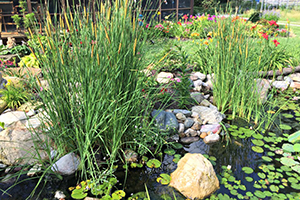 Although well known among preppers, cattails are a tried-and-true survival food. They grow wildly throughout North America and Europe and were a major staple food and medicinal plant among early native American tribes.This plant contains vitamins A, B, and C, as well as potassium and manganese.
Although well known among preppers, cattails are a tried-and-true survival food. They grow wildly throughout North America and Europe and were a major staple food and medicinal plant among early native American tribes.This plant contains vitamins A, B, and C, as well as potassium and manganese.
Most frequently found near water they have the potential to provide food, tinder, and you can even use them to make flour and fishing bait! This makes cattails a very valuable and unassuming plant to have around.
Related: 50+ Survival Uses For Cattails
Dandelions
Dandelions are one of the most easily identifiable plants and they grow almost everywhere.
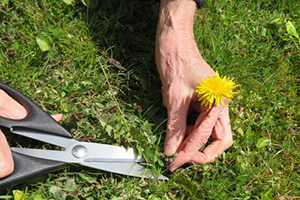
In fact, these flowers are so resilient that they’re sometimes spotted growing in some very unusual places like sidewalks, gravel, and roads.
This plant is frequently dismissed as a weed to those not in the know, which makes dandelions an excellent survival food that can be hidden in plain sight.
The dandelion can be cooked, dried, or eaten raw and has surprising nutritional content. They’re high in vitamins like calcium and vitamin K, and can help relieve common stomach upset.
Jerusalem Artichokes or “Sun Root”
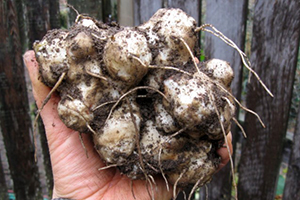 Jerusalem artichokes are a true “set it and forget” survival plant. They are considered an invasive plant and they sow themselves every year. This is bad news for some gardens but perfect for a survival garden. What’s more, these hearty tubers are drought resistant and can grow in almost any soil type.
Jerusalem artichokes are a true “set it and forget” survival plant. They are considered an invasive plant and they sow themselves every year. This is bad news for some gardens but perfect for a survival garden. What’s more, these hearty tubers are drought resistant and can grow in almost any soil type.
The tubers are the tastiest part of the plant and can be enjoyed by both humans and livestock. These can be used in place of potatoes in recipes and will help to make a hearty meal. Plus, you’ll have no shortage in your supply if you plant them ahead of time.
Related: 8 Great Depression Era Recipes We Will Need Soon
The stems and leaves of the plant are also edible and have a surprising protein content that surpasses that of both beans and corn. It’s no wonder why so many people add this plant to their hidden survival garden!
Prickly Pear/Nopal Cactus Leaf Meat
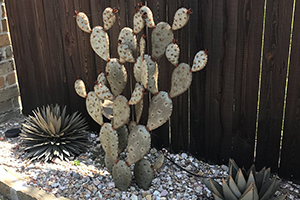 The Prickly Pear cactus might seem too large to hide, however, not many people are aware of the many uses of this desert plant. Most people are aware of the prickly pear fruit, but the thorny leaves of the plant can be skinned and eaten as well. Plus, the meaty leaves can provide you with some water to get you through hard times.
The Prickly Pear cactus might seem too large to hide, however, not many people are aware of the many uses of this desert plant. Most people are aware of the prickly pear fruit, but the thorny leaves of the plant can be skinned and eaten as well. Plus, the meaty leaves can provide you with some water to get you through hard times.
These cactus leaves are delicious when skinned, cubed, and fried up with some scrambled eggs. You can also juice the leaves and the fruit for a refreshing summer drink.
Nopal cactus meat is rich in fiber and has high levels of Vitamin C and antioxidants. If you live in a desert climate, the nopal cactus is a fantastic survival plant to have.
Wild Strawberry
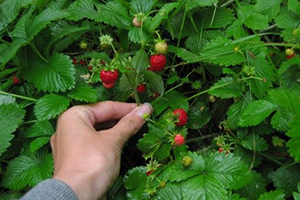 If you’ve ever found wild strawberries while foraging, you know what a treat they can be. The great thing about them is they don’t really look like what most people would recognize as strawberries at first glance. Wild strawberries are found scattered near trees and along the edges of wooded areas.
If you’ve ever found wild strawberries while foraging, you know what a treat they can be. The great thing about them is they don’t really look like what most people would recognize as strawberries at first glance. Wild strawberries are found scattered near trees and along the edges of wooded areas.
They’re easy to grow and they create a nice ground cover that can be effortlessly concealed among other plants.
Related: If You See This Berry, You May Want To Harvest It
Wild strawberries are high in vitamins A, C, and E and the dried leaves, roots, and stems can be made into a tea that can treat stomach upset. However, wilted wild strawberry leaves can produce a mild toxin that evaporates when dried so dry the leaves before using.
Summer and Winter Squash Varieties
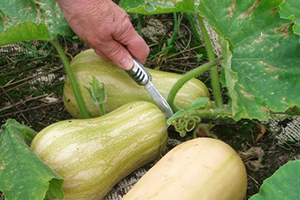 Squash is an excellent addition to your hidden survival garden simply because it can be disguised well in a “messy” garden and can give you plenty of food to eat and preserve. It acts as a sprawling ground cover and does well when planted alongside corn and beans which can distract potential garden raiders.
Squash is an excellent addition to your hidden survival garden simply because it can be disguised well in a “messy” garden and can give you plenty of food to eat and preserve. It acts as a sprawling ground cover and does well when planted alongside corn and beans which can distract potential garden raiders.
Squash of all varieties is high in fiber and Vitamin C and makes for a hearty meal when times are tough.
Lentils
Lentils are one of the most nutrient-packed legume varieties around.
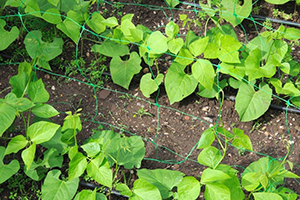
If you live in Europe, Asia, or the northwest region of the United States, you have a growing advantage.
Still, lentils are very hardy, easy to grow, and easy to conceal. With enough TLC and preparation, they can grow quite well in other climates or indoors.
Lentils are high in carbohydrates and protein—two important things you’ll need when SHTF. They can be eaten as sprouts, ground to make flour, or harvested off the bush to make a tasty soup or stew.
Cucumbers
Although cucumbers are low in calories, they are extremely productive in the garden.
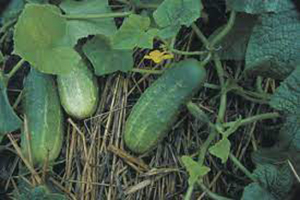
If you or someone you know has ever grown cucumbers you know that they often produce far more than the average family can reasonably consume.
This plant would be a great distraction plant for potential thieves and you might even welcome the idea of people taking some extra cucumbers off your hands.
Cucumbers can be pickled, frozen, juiced, or thrown into a soup or salad. Plus, cucumbers are 95% water so they will help to keep you hydrated when it matters most.
Wild Mushrooms
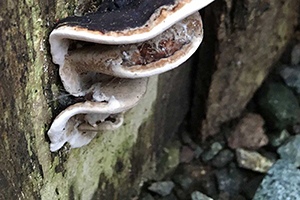 Knowing how to identify and harvest wild mushrooms is not only a valuable skill to have but is also a great way to get back in touch with nature which many people have unfortunately forgotten. As the name suggests, wild mushrooms can be harvested in the wild or intentionally grown in root cellars or on trees.
Knowing how to identify and harvest wild mushrooms is not only a valuable skill to have but is also a great way to get back in touch with nature which many people have unfortunately forgotten. As the name suggests, wild mushrooms can be harvested in the wild or intentionally grown in root cellars or on trees.
Some mushrooms are eaten raw or with other food, whereas others best when made into tonics, tinctures, or poultices — making them a valuable addition to your medicinal edible garden.
Peppermint
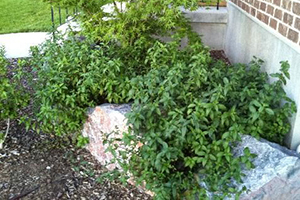 Peppermint is a wonderful plant to have in your survival garden. It can be tricky to grow from seed, but once it starts it’s hard to stop! Peppermint or other mint varieties are usually eaten raw or as a refreshing addition to drinks, but this plant has a huge list of medicinal benefits as well.
Peppermint is a wonderful plant to have in your survival garden. It can be tricky to grow from seed, but once it starts it’s hard to stop! Peppermint or other mint varieties are usually eaten raw or as a refreshing addition to drinks, but this plant has a huge list of medicinal benefits as well.
Peppermint tinctures are often used as a way to treat hiccups, stomach upset, indigestion, and muscle spasms. When made into an ointment or oil, it can provide relief for muscle pain and congestion.
Additionally, peppermint can act as a natural pesticide for some plants and will keep undesirable pests away from your garden.
Mullein
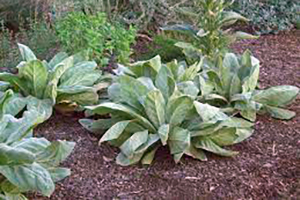 Mullein is an easy-to-grow flowering “weed” that has a wide range of medicinal uses but is most often prepared as a tea and tincture to treat a variety of health issues. Teas made from the leaves and flowers are known to help with breathing problems and immunity support.
Mullein is an easy-to-grow flowering “weed” that has a wide range of medicinal uses but is most often prepared as a tea and tincture to treat a variety of health issues. Teas made from the leaves and flowers are known to help with breathing problems and immunity support.
Mullein teas have been used to help with chills, colds, pneumonia, sore throat, flu, bronchitis and more.
However, the tiny hairs on the stalk and leaves can be irritating to the mucus membranes and skin so you’ll need to strain these hairs away when preparing tea or tinctures or before eating the leaves.
Elderflower/Elderberries
Elderflower and Elderberries have been venerated for their food and medicinal properties for centuries.
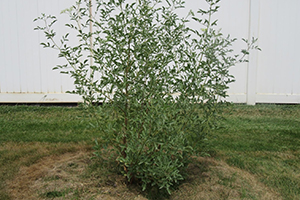
Related: 34 Wild Plants Every Prepper Should Know
The elder tree is host to both of these important plant parts. The sweet, citrusy, vanilla-like elderflower is used more in food whereas the tart elderberry is used more for medicinal purposes or prepared into syrups, sauces, and jams.
The elderflower can be eaten raw but the raw berries are usually poisonous so they require cooking to eliminate toxins before eating. Both the flowers and berries are known for their immune boosting properties but the elderberry syrup is the most potent of these medicinal forms.
Wild lettuce
Wild lettuce belongs to the daisy family and is a relative of common lettuce.
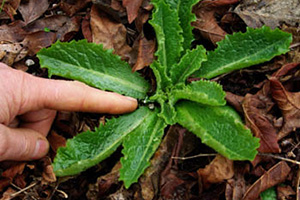
This hardy plant can be found growing freely along roadsides and riverbanks in disturbed soil.
The prepared sap from this plant has long been praised for its antimicrobial, analgesic and sedative effects that are similar to opium and have been used this way since 400 BC.
In addition to its medical uses, the cooked leaves of wild lettuce contain magnesium, vitamin C, and potassium. Because of its psychoactive and analgesic properties, always cook wild lettuce before eating as a food to eliminate the risk of toxicity.
Potatoes
Although it might seem too obvious, no survival list would be complete without potatoes. Potatoes have helped folks survive intense famine more than once throughout history.
Potatoes can be grown outdoors, indoors, in 5-gallon buckets, and can even survive in urban settings so they grow in abundance and are easy to hide or disguise. These root vegetables are a great source of carbohydrates, potassium, and vitamin C and are a joy to have in your hidden survival garden.
One of the more unfortunate truths about our modern society is how removed people are from nature. However, you can use this to your advantage.
When uninvited guests trespass on your property to steal your food, there’s a good chance they won’t know what they’re looking at. In some cases, they may even mistake your edible plants for nothing more than messy weeds and leave your valuable survival garden untouched.
You may also like:
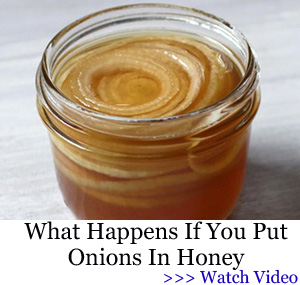 Trees That Can Be Tapped For Sap And Syrup
Trees That Can Be Tapped For Sap And Syrup
The Only Food That Grows Almost Faster Than You Can Eat It (Video)
10 Survival DIY Projects You Can Start on Your Property Right Now

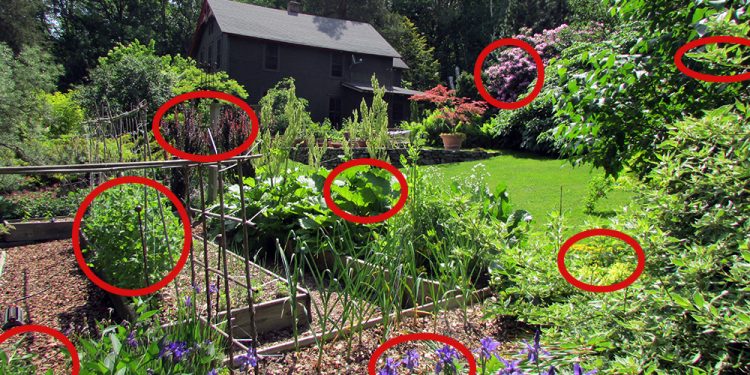













WILD LETTUCE XTRACT IS ANOTHER GOOD PLANT TO HAVE THE PAIN RELIEVING PROPERTIES HAVE HELPED ME WITH SEVERE PAIN SYNDROME. MT ROSE HERBS, EBAY JUST A THOUGHT TO ADD TO THE LIST. GREAT EPISODE THANKS GUYS. LOVE JULIE
Absolutely correct. it has helped my wife who was in a horrible car accident and lost a foot. the effects from eating the lettuce helps her sleep and is a great pain killer too
I am looking forward to the additions to this list by our community. My printer is standing by to add to my book of knowledge, and usually, my deeper research into a plant will produce several pages of reading, not to mention getting lost down the rabbit hole when searching.
I have just moved to my “final stand” location, so my land is a blank slate for gardening. I have some nut trees on the property already, but I have to compete with the squirrels and raccoons. Dandelions, purslane, and a whole lot of other plants and WEEDS grow in abundance here and I have been busy adding to my plant identification book for my grandsons.
So, for my Christmas present this year, I am asking that you “blow up” this comment section to make me smart and keep me busy.
Where do you live? Some hidden food plants are available in limited areas.
Northeast Texas.. growing zone 8a, but I think with our currently dictated climate, that may be a little off.
I have lots of trees (Pine, Oak, Cypress, Prickly Ash, Cedar and others) and some of the weeds around here have look-alike counterparts that have me a little leery about foraging. Mushrooms are a hit/miss item since I am on the feral hog circuit. I will be fencing off my “orchard” due to the deer beating me to the fruit, but I am not as concerned about that because my wife and I both love nature.
I want to plant some Jerusalem Artichokes, and I am to concerned about the invasive spread, but I am wondering if the hogs will be more aggressive in digging up my pasture.
I have basically 2 elevations here. My best growing options for most plants are on the higher elevation, and then a steep hill goes to the bottom. The bottom stays wet during winter/spring, then hard and dry during the summer/fall (hence the Cypress trees). The back side of the property probably has the most potential for mushrooms, but unforeseen circumstances has delayed me updating my “guidebook”, so I am not sure where I stand with foraging options.
LCC mentioned his experience with a plant identification app at one time. I don’t think he was as impressed as he had hoped to be. I had our County Extension agent out here one time, and he was not comfortable with plant identification. The “old timers” are few and far between now, and I am now being considered an old timer, so that doesn’t leave many options, which forces me to spend more time on research, reading, printing, and testing. At least I have some toilet paper in case I make a mistake with identification.
@ Prepper in training
Say prepper. You need to start an asparagus garden. I started one 3 yrs ago and got a real good patch going and every yr it has gotin bigger. If you do not cut them they will reseed and keep coming back bigger and stronger.
It will take 2 yrs if you start by seed or you can buy starters and you will get asparagus the first year.
They all so make it thru any cold short or long term. So far.
Need no attention. just cover with some old leaf matter or some mulch during winter. Remove come. spring time.
I dehydrate mine and use as powder for an extra dose of greens.
I’m in mid Texas, under Oklahoma. lol…
Also got termric and ginger. started.
Fixin to start my pepper corn plants.
Getting ready for spring.
Ck out this guy. I have been watching him for a long time. Very smart in identifying mushrooms and so much more. His name is Adam Haritan, he’s on u tube under “Learn Your Land”…
Merry Christmas. ?
southern illinois it grows on road sides. i found a couple in my yard too
You absolutely have to go to the website ForagingTexas.com. Pictures, identification help, uses of plants. Best and most comprehensive website for Texas there is.
We have a prickly pear cactus. Unfortunately our garden got watered with chlorine a few years ago. The prickly pear cactus was the only thing to survive. It has seriously grown and taken over our hill. Yes, sometimes my neighbors pick the pears off.
@ Maxine
We have a thornless prickly pear cactus.
Not sure if you can eat them. Need to look into it and see if it is edible. I ate cactus before and it was good. cactus and egg beritos.
Love cactus candy made from prickly pears. yum yum…
Thornless were bred to make it easier to pick pads and larger fruit.
@ Red
Do you know if they are good to eat?
Prickly pear are all good. Are they prickly pear? If they are, they’re a domesticated variety. I have two varieties of thornless in the yard and one with thorns. All taste the same. niio
ant: Remember, when in doubt, test! Remember to cook pads because of calcium and other things that can cause diarrhea and kidney stones. Young pads don’t have that, or the fruit. niio
Red
Thanks. I will start to eat some. Can you dehydrate them. ?
Red
Thanks. I don’t need any nasty things.
So the younger the better. ?
My cactus is an old plant. But is making pads all over it.
Maybe start small and see if it is worth the effort.
Sauteed pads and cream cheese on dark wheat bread, brown the sandwich in a frying pan with butter like grilled cheese. Prickly pear has flavor, some vitamin C, some calories but you have to be a starving Longhorn to live off it. Be careful handling the spineless, it has a few of the very fine spines called glochids. The glochids are destroyed by cooking, but I pruned some spineless last week and have a tiny hair lodged in my palm that is festering a bit
@ Judge
Should you pill or shin the pads to help with those tiny hairs or thrones.?
ant: Folks used to pack them in salt to pickle them. Donno about dehydrating, but experiment. Wild nopal: Thorns start out soft. As they harden, the pad develops a lot of fiber. Pick while the thorns are soft. Thornless will still have glochids!
Judge: They can be removed with masking tape. niio
Red
Yes sir, Thanks for all the info.
I will test some in my dehdrator.
Not all prickly pear are good to eat. I used to have a miniature variety that I bought and planted. They were supposed to mature out to about 2′ tall. In the spring, I cut a fresh pad, skinned it, and cut it into chunks to cook along with scrambled eggs. Me and my son got a debilitating headache for about 6 hours afterwards. After the headache, there were no other effects. Did some research and discovered SOME PRICKLY PEARS DO NOT HAVE EDIBLE PADS. I ripped those prickly pears out and replaced them with a variety that is grown commercially for the fruits (naturally that way, not GMO).
D: I was surprised, but yes, there are people who have a bad reaction of prickly pear. Wow! We eat a lot of different kinds of them–by the ton each year, and in 20+ states. niio
https://succulentsaddiction.com/can-prickly-pear-make-you-sick-4eb20485/
I believe PP is also high in nitric oxide which helps with blood circulation.
malva neglecta aka dwarf mallow. tender new leaves as salad
I have a few of these items including wild oranges.. I am having trouble identifying all of them..How can I obt a in these Jerusalem artichokes?
Obtain
Skip, are the wild oranges trifoliate or something else? If they are trifoliate, you can graft tastier fruit on if you like. The good thing about the trifoliate is they are thorny and taste terrible. Leave a good layer of those around and only graft the ones in the middle of the grove with good fruit. Something not very visible like a small lime (green on green, won’t show up to the eye). In my experience chip bud grafting was the most successful.
Nice idea.. good knowledge.. thank you.. I will see if i can find sun root. I have butterfly plants but i dont know what species.. Mine were overgrown so I cut them back. I think these are less sought after. I really like the lime idea, now to find a live tree. Hehe
I planted potatoes large pots, we shall see.. I had grown these on my family farm in N.E. Relatives had used their own seed for generations. In N central Fl now.. Not much rain here.. which isnt bad. Wish I had more room. Hehe
I’m behind the curve. As the guy above said.. Keep pumping out the information. Please
Trifoliate orange, you know plants. I kept one in a big pot years ago because of it’s prehistoric appearance, everything about it is thorny. Not going to be dependably winter hardy north of San Antonio, but you’re right, this is the root stock used by most commercial growers. Very cool South Texas plant.
Yup.. 3 leaves and huge thorns.. I have dripped juice into water bottles .. not too bad. I will look up your grafting procedure.
I had forgotten about asparagus.. Saw it here.. easy to care for. I have made beds. On a side note.. the site suggests small bills to have on hand to spend.. I have thrown tons of Kennedys and Eisenhowers in a bucket.. Sane or insane?
Skip: A lot of seed catalogs carry sunchokes. Some stores carry them, as well. Look for large roots because that’s what commercial grows want, for the sugar content. niio
We took out a Jerusalem artichoke patch from the house in town.
Very prolific and it took me several years to do it.
I got mine from my father’s place, he was using them for stream bank erosion control.
They are usually freely given by them that has them.
I would like to add crab apple for pectin,
and mulberry for fruit and other things.
Hide them in plain sight.
You can add crab apple for pectin if you like, but any apple in its green state I believe will also give you pectin. If you are interested in crab apple tho I have many to share, seeds, seedlings, or fruit. It’s yellow fruit about 2″. I also have mulberry I have to cut because it’s growing at a foundation. I can’t get the roots out because it’s growing under the foundation now but I could send cuttings. But the kind I have makes a small berry that I think a larger berry type would be more worthwhile to grow.
Where are ya?
A neighbor has a huge diseased apple tree that partially hangs over my back fence. I pick the fruit before it gets totally ripe and develops more brown areas. I cut up the apple and make a spicy applesauce that isn’t very sweet, probably best for eating with pork. I took the green apple peelings and dehydrated them. Once they were dry, I ran them through the coffee grinder. The natural pectin is good for detoxing the system. I sprinkle it on yogurt.
My mother used to can a very good spicy pickled crab apple from some very small crab apples. It was a regular during winter holiday meals.
@ Skip: some Eisenhowers and Kennedys contain some silver. Others are amalgams and only worth face value which continues to slide down the dark hole of inflation faster and faster. Go on line and see which years contain silver. Those are the ones to keep. Besides preppers pulling silver coins out of circulation, the goobermint is also screening for silver coins and pulling them out for the same reason — the silver content. My guess would be that silver content coins will be toward the bottom of your bucket.
I used a spreadsheet to list my “junk” silver as such coins are denoted in the silver trade. By listing the percent of silver in each coin and the spot price of silver on that day I can reflect the nominal value of my collection.
I say nominal value because the listed weight multiplied by the spot price is the retail price of an uncirculated silver coin. What you dig out of your tub will all be circulated coins and not worth face value because some of the silver has been worn away and the cleaned coin will weigh less than an uncirculated coin.
As for the non-silver coins, spend them. Use them to buy prepper supplies. It will be like finding money in the street. They will buy less two years from now than they can buy today.
Keep your silver-containing coins in a safe place. I haven’t looked at the values of my coins in several months. I only review it when I acquire another silver coin, usually a dime. I haven’t come across a silver quarter or half dollar in a couple of decades.
Sitting here writing this I can’t recall receiving a half dollar coin in change in an equally long period of time. I wonder if the mint is recalling them and not minting them? They could be holding them in reserve. Perhaps someone who is more into coin collecting than I could answer that. Same with Sacajewas. The local coin dealer said his best advice was to spend them. Too many people are saving them for them to ever gain anything over face value.
I ran into that with records. I had perfect LPs of the original cast of Hair and Fidler on the Roof. The record dealer said too many people had the same records, so there was no resale value. He did buy an obscure record that my kids had bought when they were in their teens. It was by somebody I had never heard of but apparently it was his (or her, it was one of those unisex names)
and was in bigger demand because of it being a first release and not purchased heavily and currently was in hot demand. Strange but the world of collectibles is a strange jungle. Can you say Beanie Babies?
Save sorting for a cold rainy indoor day. First, however, go on line and find the dates you are looking for, print it out and put the list in your coin tub
LCC: Good advice. I like new pennies, tho, for the zinc content, 97%. But, we only save back those 97% copper copper.
1944 – 1946 Brass (shell case Copper) 95% Copper, 5% Zinc 3.11
1947 – 1962 Bronze (95% Copper, 5% tin and Zinc) 3.11
1962 – 1981 Brass (95% Copper, 5% Zinc) 3.11
1962 – present Copper-plated zinc (97.5% zinc, 2.5% Copper) 2.50
I mix food plants in and among my landscaping plants. Some things are more effectively hidden in plain sight.
@Michael Van Volkenburg
Some have previously suggested the same thing and I think it’s a pretty good idea. Especially in these strange times.
Just keep your garden little “wild”. Doesn’t have to be pristine. Then just grow your food crops in amongst your landscaping plants. If urban dwellers do happen upon your garden they won’t have a clue.
Obviously this applies to a small plot of land rather than a farm. The rules for a farm will be different and then you’ll have to have a dedicated way of defending however many acres you have.
I’m seriously considering getting some hawthorn trees. They’ll be my first line of defence. Once SHTF really gets going I’ll also booby trap the property. I have some very nasty ideas. If I do it now they’ll just drag me off to jail. If society completely collapses not only do I have the right to protect my property it’s also my duty to protect what’s mine in any way I deem necessary. If someone comes onto my property in the middle of an SHTF situation and means to do me harm it will cost them dearly.
The hawthorn tree produces nice little fruits. I picked a bunch of mine before it got too cold and dehydrated them. As I was picking them, some fell. The dog ate quite a few of them and she is healthy with bright eyes and a shiny coat. There is a lot of information on-line regarding people making a healthy tea for a cardiac boost.
The thorns are vicious. It isn’t just the poke, there is some sort of oil that make the poke sting more.
Michael: Most ornamentals were once food- or medicinal plants. Dahlias, for one, were very popular eating with Mexicans. Canna, some chilis, and so on. If blueberries grow where you live, even most HMOs approve of them as an ornamental. Ornamental kale is good. Tree kale, as well. When they bloom, we let them go to seed for sprouts. Pine strawberries (the white variety) were bred to look good as well as taste good. niio
I planted some Calendula seed in a raised planting area a few years ago. It has now spread to about 5 times that area in the raised planter plus various volunteer plants in the yard where there isn’t any grass. I put it in tea and salads. It doesn’t have a lot of flavor but it is very good for you.
I cut up my banana peels and spread them under perennials. I do the same with egg shells. As I use the shells, I dry them and then crush them before sprinkling them around. I add a commercially made organic fertilizer, specific for this area, if I remember to but the Calendula is very hardy and just keeps going.
Sage: A few years ago, calendula petals were bringing $16.00/ounce dried. For high quality, and high pay, pick as soon as the flower is fully open. Whole head, dry in shade, then remove petals and store in an airtight jar.
Any spot they come up in the garden they’re welcome. they thrive all winter, but in summer we have to use windbreaks. But, this is where the valley starts to narrow into a canyon. AKA the wind tunnel 🙂
All scraps go in worm beds. The beds are 25 gallon tubs with drain holes. water that seeps out is compost tea. Yummy stuff, to the right things 🙂
Am still picking tomatoes–after getting few till daytime temps dropped below 90F. Chimayo chilis love cold nights, they thrive in it, so they’re loaded. niio
I also have wood sorrel, sheep sorrel, clover, purslane and plantain growing in my yard. Planted Herb Robert (considered and invasive species) in the flowerbeds leading to my door.Never used even herbicides on my lawn because I didn’t want my very respectful neighbors dogs to walk through it, then go home and lick it off their paws. Lucky for me, huh? Was delighted once I learned about the value in these plants. (BTW, I live in a suburban neighborhood in Washington state.)
We quit using any pesticide or herbicide, chemical or otherwise, 20 years ago, the yard teems with life, it’s great!
And of course I grow lots of dandelions.
Our bees LOVE dandelions!!…I whole heatedly encourage there growth. I eat the leaves and the bee’s get the flowers 🙂
Most folks would never recognize a vegetable or fruit in its natural state growing in a garden or yard, my neighbor said she grew up on a farm, when I showed her chick weed she didn’t seem to know about it.
But, most cities teach grade school children how to garden. Some, like NYC, has farms inside city limits. They pay little in taxes, but have to allow school outings to teach children how to raise livestock and garden. Keeping small livestock is also getting common in cities because authorities encourage it. People moving here from LA, Phoenix and so on are planting veggies and fruit, not flowers. niio
Red Red Red, you opened my eyes to the most important plant that hides in plain sight there is, Canna Lilly! So easy to grow, just divide the tubers and water. I was around them for decades and never knew what a vital food source they can be. Eat the tubers like taters, or separate the starch from the fiber to use as flour, eat the new shoots, steam food wrapped in the leaves. Easy to grow and maintain in useful quantity, no glochids, no oxalates, tastes good!
Judge: Another American first! The plant is so popular, a rancher in Brazil stopped raising soy for export and invested in canna/achira. 36,000 acres worth. After cutting, the tops are dug in, and black oats planted. Cattle graze the oats and any canna missed, and in 2 months, they’re planting again. Problems in my area, too windy and not enough water. Both are easy enough to overcome. niio
My Cannas growed to over 10 ft to 11 ft tall this year. Tallest we ever had.
makes a great barrier along the fences.
Nice to know you can use them for a pinch in hard times.
No one ever mentions a nitrogen fixer like alfalfa, red. Just grow it in amongst some of the other plants. Once it’s done just dig it under; seeds and all. Not only does it help your garden it also smells soooooo nice. 🙂
ant: Canna starch is the 2nd most expensive food starch known. Animals like the leaves and the shoots are called Inca asparagus. The patches need to be thinned, so make use of the roots. Peel and grate in water to get the starch out. There’s sites online that teach the best way, and how to make ‘invisible’ noodles. When the kids were little, they were called glass noodles. You can imagine what the school had to say about feeding the kids glass 🙂
Armin: Alfalfa has purple booms, as well 🙂 Seeds make good sprouts. While it’s cool, I get more out of black radishes and rye for the winter garden. Until it decays, rye suppresses weeds. Black radishes suppress most nematodes and send things like javelina and ground squirrels shrieking into the night. Roots can go 8 feet deep, putting a lot of humus into the soil. Rye loosens even tight clay. Summer cover is sorghum and cowpeas. Cowpeas will make a good crop and still put a lot of nitrogen in the soil. to kill rye, when it blooms, mow it off. It should die back leaving a lot of mulch, and roots in the soil to make the earth rich.
Sorghum is cut when it starts to bloom and tillers, sprouting 4-6 new plants. Roots will dig as deep as the plant is tall. That’s a lot of good, rich mulch earthworms are busy making into fertilizer. Sorghum is about predator proof because of cyanide in the roots. niio
Red
Yes I’ve seen glass noodles before. Did not know how they were made. Quite interesting.
So many things to remember.
Thanks…
One dangerous piece of information reference the Nopal cactus: the comment:
“the meaty leaves can provide you with some water to get through hard times”
is a very bad piece of advice and is usually the result of what I call “Intellectual Nepotism, ” the result of reading it from another unproven source. Cactus juice from any cactus — Nopal, Barrel, etc., — will trigger almost immediate diarrhea and rapid dehydration, which on a hot day can be life threatening. I have seen this as part of rescuing subjects in Arizona as a Search and Rescue Unit member. I reference two desert survival instructors’ books: “98.6, The art of keeping your ass alive,” by Cody Lundin of Prescott AZ, or “Desert Survival,” by Tony Nester of Flagstaff AZ for the truth about drinking cactus.
Yes! And, kidney stones, if you survive the last meal. Yet the fruit is good and helps lower body heat, as well as kill thirst. niio
Red: Does this mean it’s not safe to chop and cook the meat of the pads? Or does cooking it get rid of the water in the pads? We have tons of prickly pear on our acre and we let it grow in case we need it someday.
Mike: Once thorns start to harden, the pads are very fibrous. I’ve heard Mexicans joke about being so hungry they ate pads raw and got the trots–because it was serious, they crack jokes about it. Only the serious stuff is worth joking about.
Take them when small and they’re great (nopalitos, tender cactus). Clean, slice, and put in a crock, each layer sprinkled with salt and let them ferment. Or, pressure can raw pack with some onion and chilis, a little cilantro. I can go thru a quart a week by myself. Mind, some people can have a reaction to them, so test first.
Prickly pear is good for you, and considered a general tonic. Like most things down here, if it ain’t got horns, thorns, or fangs, it’s poison. Cooked, pretty much everything is good. Most wild fruit are eatable raw. Plant mesquite! Plant wolfberries and other things. Salt brush is eatable, and exudes salt on it’s leaves. If you live in the low desert, find ajo lily, the bulbs taste like garlic, or plant Creole garlic and sonora. niio
Wow! Really? I had no idea. I live in Arizona too (Phoenix) and I’ve been taught since grade school that you can drink cactus water from saguaro and prickly pear as long as you boil it first (I think there’s a few other things you need to do to it first). Now I’m wondering if this is false and if there’s a whole state of people with the wrong info about cacti and desert survival. Off to check out those books you mentioned! Thanks.
Cat: According to Arizona St., do not eat cactus raw. Do not try to drink raw liquids from cactus. niio from san pedro canyon
https://arizonadailyindependent.com/2013/06/05/cactus-water-will-make-you-sick/
My grandma always had a spot where the lambs quarter was allowed to grow she it to add to greens. Mom did too, I finally convinced everyone my hubby it was ok to eat and it has been growing in our yard for years now. It grows anywhere and everywhere. Add to poke in spring we even froze and canned our greens
Is there a preferred variety of canna lilly to grow for food or will any variety be good?
Mike: Achira is the commercial name. Queensland Starch root. Most people just use what they can find. Good roots will be long and straight with no knobs to hide gravel or dirt. We have both. Indian Shot is a wild variety, and the commercial achira. niio
Thanks Red, I’ll look into getting some seeds.
When one walks here with a keen eye, one notes that there are plenty of hidden gardens full of fruits and vegetables planted amongst the usual garden variety nursery decorative plants. The most interesting to see are the amaranth varietals peeking out here and there amongst the shrubbery. I will be adding it to my garden next spring. The red varietal doesn’t look real let alone edible which makes it the better choice.
CC: Because of the drought and wildfires, I thought we lost the Tarahumara red. None planted survived long enough to bloom. Last spring, seedlings showed up, covering the bed. Call it a gift from God because I have no idea if it hardseeds like clover. Almost as soon as it started to bloom, birds were al over it and then plenty of plants came up in a half-dozen other beds. Red Merlot came up, one seedling, which was transplanted, and then fifty outside the garden. One good plant will give cups of seeds. niio
@ CC
I started mine amaranth last year and it did very good. Might I suggest that you start inside and then transfer out doors later. Get a head start on spring time.
I’m starting to get my stuff ready for spring.
Will start to get my bucket and garden ready after the new year.
Hope it’s a new yr, the last 2 yrs were not that new… lol…
Happy gardning…